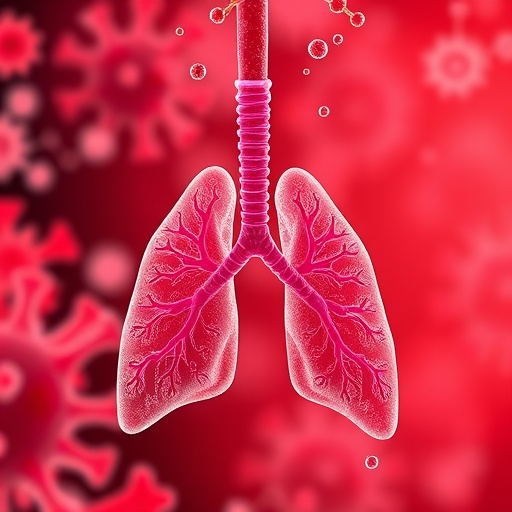FDA Approves Sevabertinib for HER2-Mutant Non-Small Cell Lung Cancer – Pharmacy Times

Regulatory Approval of Sevabertinib for Non-Small Cell Lung Cancer (NSCLC)
Advancing Sustainable Development Goal 3: Good Health and Well-being
The accelerated approval of sevabertinib by the U.S. Food and Drug Administration (FDA) for adults with specific forms of non–small cell lung cancer (NSCLC) represents a critical step forward in public health. This development directly supports the United Nations Sustainable Development Goal 3 (SDG 3), which aims to ensure healthy lives and promote well-being for all. The approval contributes specifically to the following targets:
- Target 3.4: By providing a new, effective treatment, sevabertinib helps reduce premature mortality from non-communicable diseases like cancer.
- Target 3.b: The research, development, and subsequent approval of this targeted therapy underscore the importance of innovation in creating medicines for complex diseases, a key component of global health advancement.
The FDA granted approval to sevabertinib for adult patients with locally advanced or metastatic nonsquamous NSCLC whose tumors have HER2 tyrosine kinase domain (TKD) activating mutations and who have received prior systemic therapy.
Clinical Trial Data and Efficacy
SOHO-01 Trial Findings
The approval is based on efficacy and safety data from the SOHO-01 (NCT05099172) clinical trial, a multicenter, single-arm study. The primary efficacy outcomes were Objective Response Rate (ORR) and Duration of Response (DOR), as assessed by a blinded independent central review.
Efficacy Results
- Patients Naïve to HER2-Targeting Therapies (n=70):
- ORR was 71% (95% CI, 59%–82%).
- Median DOR was 9.2 months (95% CI, 6.3–15.0).
- 54% of responding patients had a DOR of 6 months or longer.
- Patients with Prior HER2-Targeted Therapy (n=52):
- ORR was 38%.
- Median DOR was 7.0 months (95% CI, 5.6–not evaluable).
- 60% of responding patients had a DOR of 6 months or longer.
Safety, Administration, and Diagnostic Framework
Safety Profile
The SOHO-01 trial established a manageable safety profile for sevabertinib, which is crucial for achieving the health and well-being objectives of SDG 3.
- Treatment-related adverse events (TRAEs) occurred in 96.7% of patients.
- The most common TRAE was diarrhea, which led to dose reduction in 8.3% of patients.
- No patients discontinued treatment due to diarrhea, and no cases of interstitial lung disease were reported.
Companion Diagnostic and Dosage
To ensure precise and effective treatment, the FDA also approved the Oncomine Dx Target test as a companion diagnostic to detect eligible patients. This aligns with the goal of advancing targeted healthcare solutions.
- Recommended Dosage: 20 mg orally twice daily with food until disease progression or unacceptable toxicity.
- Warnings: Prescribing information includes warnings for diarrhea, interstitial lung disease, ocular toxicity, and pancreatic enzyme elevation, requiring patient monitoring.
Analysis of Sustainable Development Goals (SDGs) in the Article
1. Which SDGs are addressed or connected to the issues highlighted in the article?
SDG 3: Good Health and Well-being
This is the primary SDG addressed in the article. The entire text focuses on the approval of a new medical treatment, sevabertinib, for patients with a specific type of non–small cell lung cancer (NSCLC). This directly relates to improving health outcomes, combating non-communicable diseases (NCDs), and advancing medical science to save lives and promote well-being.
SDG 9: Industry, Innovation, and Infrastructure
This SDG is also relevant as the article discusses a significant innovation in the pharmaceutical industry. The development of a targeted therapy like sevabertinib and its companion diagnostic test (Oncomine Dx Target test) showcases advanced scientific research and technological capability, which are key components of SDG 9.
2. What specific targets under those SDGs can be identified based on the article’s content?
Targets under SDG 3: Good Health and Well-being
-
Target 3.4: By 2030, reduce by one-third premature mortality from non-communicable diseases through prevention and treatment and promote mental health and well-being.
- Explanation: The article describes a new treatment for lung cancer, a leading non-communicable disease. By providing a new therapeutic option for patients with “locally advanced or metastatic” NSCLC, sevabertinib directly contributes to the “treatment” aspect of this target, aiming to improve survival and reduce mortality from this disease.
-
Target 3.b: Support the research and development of vaccines and medicines for the communicable and non-communicable diseases that primarily affect developing countries, provide access to affordable essential medicines and vaccines…
- Explanation: The article is a clear example of the research and development (R&D) of a new medicine for an NCD. The discussion of the SOHO-01 clinical trial (NCT05099172) and the subsequent FDA approval highlights the successful outcome of a long R&D process for a new cancer drug.
Targets under SDG 9: Industry, Innovation, and Infrastructure
-
Target 9.5: Enhance scientific research, upgrade the technological capabilities of industrial sectors in all countries… including… encouraging innovation and substantially increasing the number of research and development workers… and public and private research and development spending.
- Explanation: The development of sevabertinib for a specific mutation (HER2 TKD) and the approval of a companion diagnostic test represent cutting-edge scientific research and innovation. This advancement in biotechnology and pharmaceuticals enhances the technological capabilities of the healthcare industry.
3. Are there any indicators mentioned or implied in the article that can be used to measure progress towards the identified targets?
Yes, the article contains several specific data points and events that can serve as indicators.
Indicators for SDG 3 Targets
- Objective Response Rate (ORR): The article explicitly states the ORR was “71% (95% CI, 59%–82%)” for one group of patients and “38%” for another. This is a direct measure of the drug’s effectiveness in shrinking tumors, serving as a proxy indicator for progress in cancer treatment under Target 3.4.
- Duration of Response (DOR): The article reports a “Median DOR was 9.2 months” and “7.0 months” in the respective patient cohorts. This measures how long the treatment’s positive effect lasts, which is a crucial indicator for improving the quality of life and survival for cancer patients (Target 3.4).
- Disease Control Rate (DCR): The article mentions DCRs of “about 84.0%” and “84.6%”. This indicator measures the percentage of patients who achieved a confirmed response or had stable disease, reflecting the drug’s ability to manage and control cancer progression (Target 3.4).
- Regulatory Approval of New Medicines: The central news of the article, “FDA has granted accelerated approval to sevabertinib,” serves as a key indicator for Target 3.b. It signifies that the R&D process has successfully produced a new, effective treatment that is now available to patients.
Indicators for SDG 9 Target
- Development of Innovative Products: The creation of sevabertinib, a targeted therapy for a specific genetic mutation, is an indicator of innovation.
- Development of Companion Diagnostics: The approval of the “Oncomine Dx Target test” as a companion diagnostic is an indicator of technological advancement. It represents a move towards personalized medicine, where treatment is tailored to the specific genetic makeup of a patient’s tumor, showcasing a higher level of industrial and technological capability (Target 9.5).
4. Summary Table of SDGs, Targets, and Indicators
| SDGs | Targets | Indicators |
|---|---|---|
| SDG 3: Good Health and Well-being | 3.4: Reduce premature mortality from non-communicable diseases (NCDs) through treatment. |
|
| SDG 3: Good Health and Well-being | 3.b: Support the research and development of medicines for NCDs. |
|
| SDG 9: Industry, Innovation, and Infrastructure | 9.5: Enhance scientific research and encourage innovation. |
|
Source: pharmacytimes.com
What is Your Reaction?
 Like
0
Like
0
 Dislike
0
Dislike
0
 Love
0
Love
0
 Funny
0
Funny
0
 Angry
0
Angry
0
 Sad
0
Sad
0
 Wow
0
Wow
0
















































:focal(1500,1000)/https://media.globalcitizen.org/a6/9a/a69a4720-d8a1-4715-b596-18738d03c05c/rotary_polio_hero_image.jpg?#)







/countries/sri-lanka/photo-credit---dmc-sri-lanka.tmb-1200v.jpg?sfvrsn=dc298bcc_1#)


















